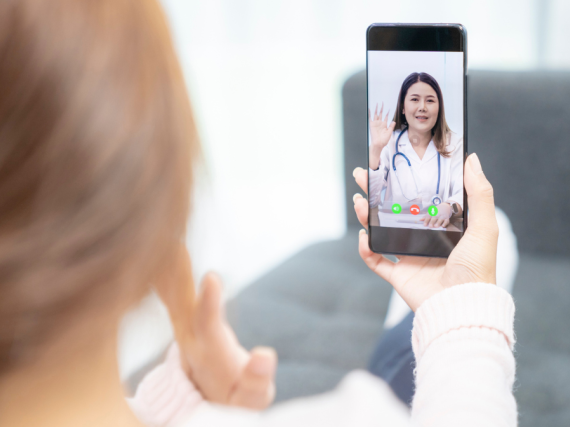COVID-19 and Its Toll on Reproductive Health
As part of my work for Power to Decide, I spend my days calling health centers around the country to learn what types of reproductive care they offer. When calling health centers that provide contraceptive or abortion services, it is clear COVID-19 is taking its toll. Early in the Coronavirus pandemic, several states tried to limit which services were considered essential. Some states went as far as classifying abortion and contraceptive services as non-essential, thus banning them. These measures did not last as abortion and reproductive rights groups fought for these time-sensitive and essential services to be reclassified. Along with legal complications, millions have lost their jobs and their insurance, adding cost barriers on top of preexisting accessibility barriers.
In pandemic hotspots such as Arizona and Texas, health centers are increasingly squeezed as they are forced to reevaluate the ways they allocate resources. For example, in Mariscopa County, AZ, which includes Mesa and Phoenix, hospitals and clinics have siphoned resources from other services in their efforts to focus on treating Coronavirus patients. Houston, TX, one of the hardest hit metropolitan cities, has seen both an economic toll and an increase in cases, both of which are weighing down the health system and people’s abilities to safely receive the services they need.
In efforts to reduce virus exposure, health centers are working with fewer available staff, staff are stressed, hours are limited, and the number of patients being seen is down. Some health centers have transformed floors and large parts of their buildings into areas only for COVID-19 patients, decreasing the amount of staff, resources, and space allocated to other patients. In some pandemic hotspots, many providers are not taking new patients in efforts to limit the number of patients they and their staff encounter.
This is making it hard for people who have lost health insurance to see new providers, especially those who serve low income populations and have free or sliding scale services. Additionally, providers that were planning to offer a wider range of contraceptive services such as the implant or IUDs are no longer able to offer those services because they have not been able to complete the necessary trainings, due to COVID-19. Some clinics and health centers have even been forced to close, meaning that some areas will have fewer options for contraceptive access the longer virus goes on.
People in rural areas already have less access to hospitals and the hospitals they have are often small and do not have the necessary capacities to serve their communities completely, especially in the case of a surge in COVID-19 cases. As hospitals have decreased the range of services they are providing to limit the number of people in the building, they’ve seen revenues drop, putting rural hospitals at greater risk of closure. For example, the entirety of rural Kentucky is considered a contraceptive desert, meaning that access to contraceptives is already limited, and the pandemic is stressing the resources those hospitals have already. This grim picture of rural hospitals leads to a lack of reproductive health access in rural areas. A full range of contraceptive options (including long-acting reversible contraception such as IUDs and implants) are not commonly available in many rural areas. Abortion services are especially difficult to access in rural areas and people are often required to drive long distances to get an abortion.
In this struggle, the increase in telehealth usage among health care providers has worked to cover some gaps in the provision of contraceptives. A recent survey by Power to Decide found that 77% of respondents said telehealth was a good way to access contraceptive services when in-person visits are not available.
However, there are still problems with telehealth and its widespread use, mainly that only 36% of respondents were able to explain what telehealth is and even fewer, 24%, knew how to find a telehealth provider. If providers and hospital systems can reach out to patients and share information about how to use telehealth for some of their visits, this information gap can be lessened. For example, telehealth could be used to talk patients through their contraception options and cut down on unnecessary in-person visits.
It is encouraging to see hospitals and providers making changes to better serve their patients. However, there must be changes made on a policy level that would allow for health care more available in areas it is hard to access and in more forms. Ideally, this would allow patients to be able to easily use telemedicine or receive an extended supply of contraceptives. This pandemic has shown that there is great capacity for innovation and advancements in health that people can take advantage of, even if they don’t yet have the all the knowledge or means. In this progress, we must not forget to include those who are most vulnerable and marginalized, the COVID-19 pandemic has exposed the vast inequalities of the health care system and increasing access and quality for all must remain a priority.



